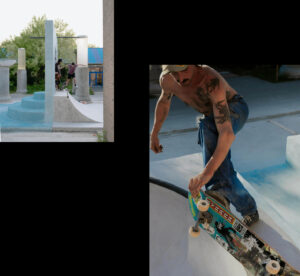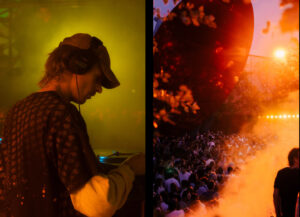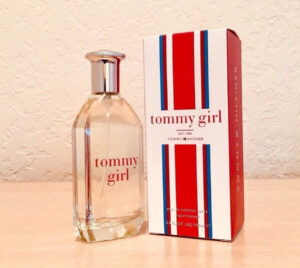
In a post-pandemic cultural landscape where music festivals often feel either hyper-commercialized or hopelessly underground, Belgium’s Horst Arts & Music Festival offers a compelling third way. Held annually on the repurposed grounds of an old military site in Vilvoorde, a short distance from Brussels, Horst isn’t just a celebration of electronic music—it’s an evolving blueprint for how festivals can act as catalysts for community growth, cultural exchange, and socio-architectural experimentation.
Blending cutting-edge art installations, youth initiatives, and a newly designed concrete skatepark, Horst redefines the parameters of what a music event can be. It doesn’t merely land for a weekend and vanish; it embeds itself in the community’s cultural metabolism, working throughout the year to turn Vilvoorde into a locus of progressive urban culture.
From Bunker to Beacon — The Festival Site as an Ecosystem
The Horst Festival is located on the Asiat site, a post-industrial complex of former military bunkers, water towers, and neglected infrastructure. What once was a relic of 20th-century conflict is now transformed into a playground for architectural imagination and sonic immersion. But unlike many festivals that merely dress their surroundings in superficial installations, Horst uses modular architecture, community-built skate infrastructure, and functional design principles to breathe lasting life into the space.
The Flow with architectural studios such as 1010 Architecture Urbanism, Traumnovelle, and Fala Atelier ensure that each edition introduces new spatial narratives. The stages aren’t just backdrops for DJs—they are ephemeral pieces of performative architecture that blur the lines between gallery, playground, and club.
One such structure is The Soleil Rouge, a stage featuring a giant, radiant red disc, glowing ominously as it presides over euphoric dancefloor moments. During Kuba ’97’s set, for example, the atmosphere becomes almost ecclesiastical—a techno mass under brutalist stars.
A New Cartography of Sound — Curating Depth, Not Just Hype
Horst’s sonic philosophy is anti-hype, pro-depth. The lineup eschews mainstream headliners in favor of genre-pushing selectors, local heroes, and boundary-testing collectives. You’re as likely to find Detroit techno legends like DJ Stingray 313 and Jeff Mills on the bill as you are to encounter rising stars from Brussels’ own LGBTQ+ and BIPOC-led crews.
This year, acts like Kuba ’97, S-candalo, OKO DJ, and Azu Tiwaline crafted sets that expanded the narrative of what electronic music can sound like—not just 4/4 bangers, but microtonal explorations, Afro-Arabian rhythmic patterns, and lo-fi breakbeat reveries.
Stages like La Grande Muraille and Panorama are acoustically tailored to enhance these nuances. Powered by custom-built soundsystems, the audio experience is textured and immersive. The festival treats music not as background noise, but as an active agent of spatial and emotional transformation.
Youth Power and Participatory Culture
Perhaps Horst’s most revolutionary element is its ongoing youth engagement program. The festival doesn’t just drop into Vilvoorde each May—it remains present throughout the calendar year with its Horst Lab initiative. Here, local teenagers and young adults are mentored by professionals in urban planning, event production, stage design, and music curation.
In 2024, the festival merged with architecture students to co-design a skatepark that would function beyond the weekend. Now complete, the Horst Skatepark has become a thriving site of daily activity—a microcosm of inclusion, particularly for young skaters and BMX riders from Brussels’ underserved communities.
In a time when many European cities struggle to create safe, engaging public spaces for youth, Horst offers a countermodel rooted in accessibility and creative ownership.
Art in the Ruins — A Living Gallery in Disrepair
What sets Horst apart from its contemporaries is the curation of visual art that is neither siloed into galleries nor isolated from the music. This year’s exhibition, titled “Grounds for Return,” is co-curated by artists from across the continent and integrated seamlessly into the site’s decaying structures.
From immersive light tunnels to sound-reactive sculptures, each piece converses with its surrounding environment. One standout is a sprawling installation by Marina Serranová, which uses layers of translucent fabric suspended in a bomb shelter to explore the theme of liminality and memory.
The idea isn’t to sanitize the Asiat site’s decay but to reanimate it, letting art and sound act as palimpsests of a city’s past and its speculative futures.
Community as Headliner — A Festival That Doesn’t End on Monday
Horst is radical not for what it adds, but for what it builds that lasts. Unlike other weekenders, it invests in permanence. The skatepark remains open. The art installations are left up. The partnerships with local youth and educational institutions persist.
Moreover, Horst has become a cultural developer, influencing city planning conversations in Vilvoorde and Brussels. Local businesses—from cafes to design studios—have become part of the Horst economy. The result is a festival that functions as civic infrastructure, not just entertainment.
This is crucial in a time when the word “community” is often co-opted as branding rather than actual practice. Horst avoids the festival tourism trap by centering locals, listening to youth, and activating underused urban space.
Challenges and Critiques — Not a Utopia, but a Prototype
Horst isn’t above criticism. Issues around gentrification, resource allocation, and cultural gatekeeping remain present. Some Vilvoorde residents question how inclusive the festival really is, especially when ticket prices and foreign visitors rise each year.
There’s also an ongoing tension between aesthetic radicalism and functional inclusivity. Not every space designed by elite architects accommodates the everyday needs of marginalized communities. The festival has begun addressing this by employing in-situ feedback loops, where community members directly shape future editions’ architecture and programming.
Still, Horst remains a working prototype—a festival willing to critique itself and evolve in response to that critique.
The Hustle
More than an event, Horst operates like a cultural operating system—installing ideas into the city’s codebase and showing what happens when music, architecture, and equity are written in the same language.
At midnight, under The Soleil Rouge, the bassline doesn’t just move bodies—it activates memory and place. In the echo of each kickdrum, one hears a collective assertion: this is our space, our future, our rhythm.
Whether you’re dancing, skating, building, or dreaming—Horst shows that festivals need not be escapes from life, but frameworks to reimagine it.
No comments yet.









